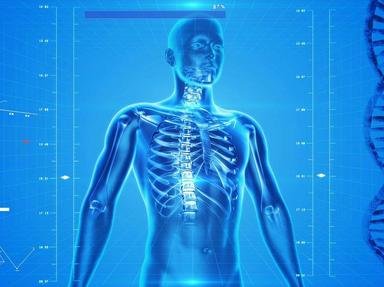Quiz Answer Key and Fun Facts
1. A skeletal muscle is any muscle found in the human body that moves voluntarily. Voluntary contraction of a skeletal muscle is achieved upon the will of a person. Which skeletal muscle in the human body is an exception to this?
2. True ribs are ribs attached to the sternum (breast bone) at the front and attached to the vertebra (back bone) at the back. On the other hand, false ribs are attached to the cartilage of another rib at the front and attached to the vertebra (back bone) at the back.
Which among the ribs is a false rib?
3. A mass was found at the front of the neck. When the doctor asked the patient to swallow, the mass moved upward upon swallowing. What can be said about the mass?
4. Which of the following statements about the skin is NOT TRUE?
5. Which is the correct sequence of blood flow in the circulation of blood in the heart?
(SVC = superior vena cava, IVC = inferior vena cava, RA = right atrium, LA = left atrium, RV = right ventricle, LV = left ventricle)
6. Which of the following statements about the kidneys is TRUE?
7. Which artery is not a branch of the abdominal aorta?
8. The brain and spinal cord are covered with meninges. The meninges has three parts: dura mater (outermost), arachnoid mater (middle), and pia mater (innermost). Which part of the meninges can the cerebrospinal fluid (CSF) be found?
9. The retina is the layer within the eye where the nervous structures are found, enabling us to have the sense of sight. Which part of the retina do we have the highest visual acuity or sharpness?
10. Which of the following structures DO NOT maintain a penile erection?
Source: Author
AlvarezMD
This quiz was reviewed by FunTrivia editor
crisw before going online.
Any errors found in FunTrivia content are routinely corrected through our feedback system.

